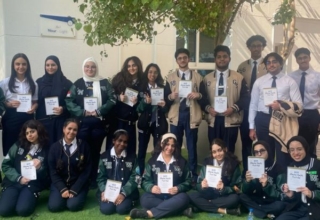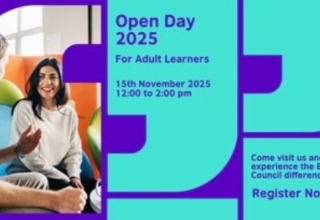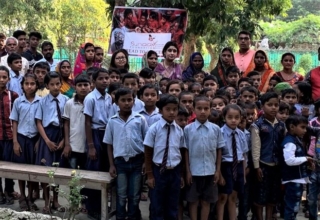

Ever since Aam Aadmi Party (AAP) won a massive mandate to run the Delhi state government in February 2015, its education reforms program to turn around the ‘failed’ school education system in the national capital state of Delhi has earned both praise and criticism not just nationally but globally. A step further in this buzz, AAP, is making education as a developmental as well political issue at a time when most parties don’t concede that role for education writes Autar Nehru
Aam Aadmi Party, which came into existence in the backdrop of Gandhian social activist Anna Hazare’s abortive anti-corruption crusade of 2012 and stormed to power in Delhi state in February 2015 with a sweeping majority (67/70 seats), has to a large extent delivered on its school education promise with several reform measures including progressively increasing overall education budget allocation to 25% level in the last four years. However, as admitted by the deputy chief minister, Manish Sisodia, the man behind the inception and administration of AAP government’s education reforms as its education minister, it is still a long way to go before Delhi’s school system is fixed and declared a successful model.
The national capital state of Delhi in several ways is a miniature India. A cosmopolitan city of many centuries and importantly as the political nerve centre of 1.3 billion Indians, Delhi has had always a cascading effect on national scenario in every sense of word right from social, economical, cultural and political experimentation. As such, running a local government in Delhi has provided AAP an opportunity as a lab to experiment its brand of different politics, which is to politically forward the basic agenda of common man.
Delhi’s share of history, legacy and years of progress is a representative of both good and bad that makes up India. Therefore, no wonder, its education landscape on one hand has some of the best surviving British era educational institutions and on the other pathetic municipal primary schools lacking even the basic amenities. In between these extremes is a mosaic of all shades from excellent to very bad lot, which again is reflective of the diversity in country’s school education system. With a population of 19 million there are 5800 schools functioning in Delhi of which 1024 are Delhi government schools. The rest are shared among aided and unaided private schools, schools under four municipal corporations (New Delhi, North Delhi, East Delhi, and South Delhi) and Delhi Cantonment Board.
Delhi being national capital and therefore the centre of power is naturally home to a sizeable influential class and combine it with the growing high and middle income class; the aspiration for a good quality education has a long existence and takers. The result, a number of good quality private schools meeting these aspirational levels coming up all these years and contributing to a cut throat competition for admissions among parent communities. So did negatively a wide perception of corruption like capitation fee and other unlawful practices by many private schools. Nursery admission assumed a sort of notoriety and became an annual battle between school lobbies and activists. As a result the public perception of fleecing and overcharging by private schools has grown into a public issue.
On the other hand, like rest of India, government school system continued to crumble and in peoples’ perception about these overcrowded schools touched bottom low and these became schools for schools of compulsion only for children coming from low income and poor families. As elsewhere to fill in the vacuum and fulfill growing parental aspirations, hundreds of small and medium private schools with English as medium of instruction also are dotting the school space in Delhi.
So, the task for AAP government was cut out on two counts. One to purge private schools of malpractices and two to revitalize government schools, both hugely popular constituencies. Expectedly, the new government began on both these fronts. In November 2015, it introduced three bills to amend The Delhi Education Act, 1973, which governs schools in Delhi along with Right to Education Act. The bills were passed in the assembly but the political rival BJP-led central government which exercises control over legislative and governance matters in special state of Delhi, on a technical procedure after keeping the bills in abeyance for long finally rejected them. The government, however, addressed a big issue of EWS nursery admissions by making it online and through drawn of lottery.
As the confrontation over stalling of bills and administrative turf differences between the central government representative, lieutenant governor, virtually over every important decision became a full blown fight from CM Kejriwal staging a dharna at LG residence upto the Supreme Court of India deciding on it, the legislative reforms lost steam and sight. “Modi government has been anti education and enemy of children of Delhi. We amended Delhi School Act for bringing in transparency, accountability and reform in private schools, central government stalled that. We made a policy for budget schools and submitted it, again, nothing happened. It didn’t recruit teachers. With land under DDA, we are finding it difficult to get land for more schools and that is why we have made full statehood a plank,” says Sisodia.

Anti-establishment lawyer-activist Ashok Agarwal, who started his crusade in 1997 against BJP state government and then Congress, however says AAP is more dangerous as it has damaged the fundamentals of education, the repercussions of which will be felt in coming years. “Even I had supported it and joined thinking some good work can be done, but soon realized it is just a NGO brand, these people don’t know nuances of government and like a typical NGO want a mess to host their hyped events,” he adds.
Notwithstanding its confrontation with the centre, AAP government continued to explore possibilities under its ambit and apparently not to lose its promised focus on education. Budget largesse, improving school infrastructure and pedagogical interventions in government schools and enforcing existing rules over defiant private schools began weaving an optimistic narrative that fixation of government schools is possible in the country.
Today, government schools in Delhi are markedly different from what these were five years ago when AAP government took over. Vastly improved infrastructure includes newly constructed 11000 classrooms, clean and functional toilets, libraries, new sitting benches for children, and smart classes. More than this, a visible change has set people from within the government school system and outside talking about this change both as a new hope for government school system turn around as well as genuine criticism of how this is being done.
According to Shailendra Sharma, Principal Advisor to Director Education at Directorate of Education, there are four main areas where Delhi government has intervened to change government schools—physical infrastructure, teacher training, community linkages through empowered school management committees (SMCs) and learning improvement interventions. Sharma, himself a product of this change was programme director and head of operations Delhi at Pratham Education Foundation before he was picked up in 2015 by Atishi Marlena Singh, the then advisor to deputy chief minister, Manish Sisodia who also holds the education portfolio, to help in the reforms process. Atishi, the chief architect of reforms intervention in education who is an alumnus of St Stephens College Delhi and Oxford University, as also a Rhodes Scholar in educational research, was however sacked in April 2018 by the Union Ministry of Home Affairs after office of profit controversy involving 20 MLAs erupted and with this she along with eight other advisors were sacked as no prior permission for creating these posts had been sought. She fought as AAP lok sabha candidate from East Delhi in May 2019 unsuccessfully.
According to Sisodia, infrastructure is the basic foundation on which the education system is based, “A broken down classroom often translates into broken self-esteem. So, we have put a lot of emphasis on building new classrooms, improve maintenance of existing infrastructure and upgrade of available facilities including classroom libraries and laboratories.” Accordingly, till March 2019 , 21 new school buildings were constructed with modern facilities and 11000 equivalent new classrooms added in the last four years. However, empowering school heads and principals to hire an estate manager on contractual basis to look after the school campus and liaisoning work, provision of security guards, outsourcing and monitoring of cleanliness of toilets and hygiene are some of the innovations that have attracted a lot of admiration and attention. Now school principals have more time to devote to school development and leadership. “Gone are those days when the image of bent fan blades in classroom, broken tubes lights and seepage stained walls, made up your image of a typical government school. Now not only children but their parents and locality people also feel proud of their school place. Proper fittings, repair and sprucing has given schools a completely new look,” tells Shaildendra Sharma.

The next big initiative, teacher enrichment started with a hunt for mentor teacher within the existing pool of teachers in 2016. After internal consultations, government invited applications from teachers and in all about 1200 applied. After shorting listing by a panel of DIET experts through group discussions and other techniques, about 200 teachers were finally chosen. These selected teachers were initially sent to Hapur for a residential camp so as to interact among themselves and also prepare for the new role. Now part of Academic Research Group of the directorate of education, each of these teachers was mentored and trained further by SCERT and DIET experts in workshops. These have been given exposure at national and international level (went to a 5 day course on mentoring at National Institute of Education (NIE) Singapore) to augment their skills of observation, facilitation, content understanding and pedagogical skills. Each mentor teacher has been assigned 5-6 schools where he or she visits twice a month to interact with teachers, principal and coordinators. “It is not a kind of inspection or assessment but a conversation about challenges faced teachers by that school. We discuss, try to find solution and it is all a shared discussion and perspectives,” says Kamini Joshi, a mentor teacher. Each school now has a teacher development coordinator, a happiness curriculum coordinator and a primary coordinator.

The first work done by this cohort of teachers along with local school teachers was assessment of reading and arithmetic ability among upper primary students, which became later the basis for controversial division of classes into pratibha (able to read) and nishta (non readers) sections discussed ahead in this report.
For school leaders similarly a principal development program was undertaken primarily to increase sense of ownership and responsibility amongst them and develop their schools as centres of learning. For this a cluster of 10 school principals each was devised and such 100 clusters covering all schools were told to hold regular monthly interactions around school development etc. 500 principals so far have been sent to attend leadership sessions at IIM Ahmedabad and IIM Lucknow. About 102 schools heads have also attended a 12-day school educational program at Cambridge University to understand international practices and another 22 went to Finland for similar experience.
According to Ajay Choubey, principal of RPVV, Hari Nagar, who went to Cambridge under this leadership augmentation program, these kind of programs do broaden outlook as the insights by observing cultural differences and their system do validate our own intervention and reforms principals take at their own level, “Confidence, exposure and meeting people is learning and inspiring to innovate back home. As a result, lot of work is happening by way of workshops, discussion at clusters and people have started thinking hard to better learning/teaching space.”
The third major initiative in the reform process has been community linkage. Constitution of SMCs as per RTE Act was followed by training of SMC members. Organization of SMC sabhas and a budget provision of Rs 5 lakh for each school. These empowered SMCs played a key role in organizing mega PTMs, reading melas (fairs) and streamlining of admission process and ensuring attendance of irregular students. “We publicized a specific day for PTM and there were instructions to welcome parents and discuss positives of children. This gesture really made children feel good and parents also opened up,” adds Sharma.
The fourth aspect of this process was to look at ways to improve learning outcomes. In the preliminary assessment of class 6-8, it was found that a majority of students couldn’t read simple text or solve a simple arithmetic division. “The situation was a complex one. These students had to be taught prescribed structured syllabus which teachers were finding difficult and problematic. No detention policy under RTE Act made the situation tighter for teachers. So, we decided to reduce the syllabus for these students, bring in some supplementary reading material (pragati series aligned with topics of prescribed NCERT textbooks) to make them pick reading and kept them in separate section,” says Sharma. Accordingly initially the classes were divided into Pratibha, Nitshta and Neo-Nihsta (these were those who couldn’t even recognize alphabets properly). Now Neo-nishta has been dropped.
Chunauti 2018 was launched in June 2016 with the aim to bridge the learning gaps of children and were grouped into three sections on basis of their foundational learning skills (ability to read and do basic maths). Pass percentage in class 9 improved from 52% in 2015-16 to 57% in 2017-18.
In 2018, the government has also introduced Happiness Curriculum and a daily mandatory period under it for students from classes 1 to 8. Students learn mindfulness, values and life issues in these classes through storytelling, discussion, participation and exercises. This year, it is rolling out entrepreneurship curriculum to install a mindset of job creators than seekers among senior secondary school students.
However, apart from political opposition which can be academically dismissed as politics, AAP government’s list of critics on these education reforms are among well known educationists. According to Prof Anita Rampal, a physicist turned professor of education at Delhi University and advisor cum member of several high power committees including on NCERT text books besides a staunch supporter of CCE and RTE, people like her had very high hopes from AAP government but this turned to be more of a hype and branding exercise for electoral gains than good spirited reform. “We are completely disillusioned with the regressive measures that this government has taken in the name of transforming the system,” she adds. Her objections span from segregation of children in classes to lack of trust in teachers, technological surveillance and as she says quasi-privatization at the instance of some big NGOs. According to her surveillance is a recipe for destroying pedagogic ingenuity and imagination which depend on a sense of freedom and autonomy. Her observation is corroborated by Prof Krishan Kumar in an essay where he writes, “A tightly structured, heavily technologised environment cannot promote the intellectual and emotional qualities education is supposed to nourish.” An authority on pedagogy interventions and textbooks herself, Prof Rampal feels 1000 schools is a small number in our country and there is no reason to celebrate. “It is a lot of hype created for a target audience. The policies and practices are damaging and some violative of children rights. First they segregated middle classes now it has been extended to secondary, which is regressive and unaceptable. SCERT is not training but monitoring teachers even as a serious subject as teacher training has been trivialized with online modules etc. Today Delhi government schools are more as laboratories for privatization,” she adds.
Shailendra Sharma, who is peeved at the frequent use of term ‘segregation’ of children in classrooms in schools feels the concept of peer learning often cited as the natural and accepted way of pulling up not so good students to the learning ladder and supposedly grossly violated by segregation policy of our government doesn’t hold much truth in our case, “In peer learning everybody does bring something to table. But here the situation is your peer has not to offer except bullying, disruptions or low self esteem.”
As quoted earlier Ashok Agarwal, is not convinced, “Five lakh children failed in classes 9-12 all these four years and after court intervention, the government readmitted one lakh. Where did the other four lakh children go? Out of system and spoiled. Then, they didn’t recruit even a single teacher and by its admissions 38% of its teachers are guest teachers. These are the ones of whom 77.5% failed to secure the minimum score in Delhi SSB examination. They have deprived children of regular teaches and as such quality of education hasn’t improved but gone down,” he adds. Agarwal also questions AAP government’s wisdom of adding NIOS centre at the top and school of excellence at the bottom thereby adding to discriminatory public school system instead of paying attention to all schools.
Responding to such criticism, Sisodia dismisses it as the romanticism of people who have understanding of schooling but not education. “Let them face the practicalities. Stand there for a couple of hours and then say what you want. We are trying to make schools workable for children who are in the system. Didn’t everybody accept government schools have failed and it is near impossible to rescue it? How come earlier intervention and such prescriptions that people talk and existed then, didn’t work?” he questions.
Agarwal lambasts AAP government for its efforts of depriving children of education from other states and children of migrant laborers as against the spirit of Supreme Court ruling extending education facilities to every citizen of the country in Delhi. “I am convinced they have damaged the fabric of Delhi by voter and non-voter segregation and hadn’t been for court intervention, they were on job of using surveys to throw non-voters out of schools. It should be a matter of pride if people come to seek education in your schools. Who in the world has an upper age limit for admission? They have done it. They are fooling children, parents and teachers—everybody and not acting on correcting fundamentals,” he adds.

An important and to some extent marginalized stakeholders in this story are private schools, which have been subjected to a lot more security and compliance all these years. At the receiving end of public bashing as unholy commercial and black money making villains, most of these schools were not allowed to increase their fee for the last three years and on face it were made to comply with all sorts of rules and regulations. According to SK Bhattacharya, president of the Action Committee of Unaided Private Schools discouraging private schools and dismissing their role in education which hold 30-40% of state’s children on their rolls, is detrimental for overall education quality in the state. “Interferences in day today matters are irritating. While I agree some schools may be erring or bad but to paint all schools with the same brush is bad for our autonomy. We have no objections with regulations but it must not be same as having a bureaucratic control. With no fee hike allowed, our teacher dissatisfaction has increased as there is a sense of deprivation and heart burn. Once Delhi topped the national educational index but with populism and vote bank politics, we are losing that status,” he adds.
Sisodia’s bluntly dismisses these talks as according to him private schools will not be allowed to works as shops. “Under the law, education is not profitable or saleable product and as long as it is like so, we as a government will enforce it,” he says while adding that private school lobbies are taking court route to stall compliances of rules on one pretext or the other.
One of the major grudges of private schools is that government is not providing equivalent amount of recurring expenditure that much is spent by it in its own schools under EWS seats. The second issue is of nature of utilization of development fund, which can be utilized for furniture, fixtures and equipments only under Duggal Committee norms. Late fee, online filing of return are other contentious issues.
While government schools are experiencing a definite change with all stakeholders, children, teachers and parents feeling having been owned up by the system, still it is too early to predict which way the verdict is. Government school teachers are today happy at opportunities that the system is creating for their involvement as their minds have opened up to best practices, holistic perspectives and importantly organized peer support. A visible change as confirmed by Sisodia himself is through happiness curriculum, “There is a lot of positive feedback about children become sensitive to things like asking mother if she has eaten and other inquiries about social issues.”

At the same time, fundamentals still remain shaky with 21000 guest teachers comprising 38% of teachers in government schools. More than half of government schools are functioning without proper principals, and reforms to Delhi School Education Act still looking remote. Accusation by critics of turning school apparatus as vote fetching tools and manufactured hype to facilitate this is another area where AAP is yet to offer satisfactory defense. But despite all this counter narrative, politicization of education as an electoral issue by AAP is appreciable for the same reason as it will force the entire political spectrum to join force and recognize education as a real development issue.
(The story was written some months ago and has been published to coincide with Delhi state elections where education achievement of the incumbent government is a talking point)








